Vladimir S. Bagotsky0471700584, 9780471700586, 9780471741985
Table of contents :
Cover Page……Page 1
Title Page……Page 2
Copyright © 2006 by John Wiley & Sons, Inc…….Page 3
3. Thermodynamics of Electrochemical Systems 33……Page 4
8. Nonaqueous Electrolytes 127……Page 5
13. Multistep Electrode Reactions 219……Page 6
18. Electrochemical Reactors 327……Page 7
24. Electrochemistry and the Environment 405……Page 8
28. Electrocatalysis 521……Page 9
33. Various Electrochemical Phenomena 621……Page 10
37. Development of Electrochemistry 693……Page 11
Subject Index 715……Page 12
CONTRIBUTORS……Page 13
PREFACE TO THE SECOND EDITION……Page 15
PREFACE TO THE FIRST EDITION……Page 16
LIST OF PHOTOGRAPHS……Page 19
ABBREVIATIONS……Page 20
SYMBOLS……Page 22
PART I – Basic Concepts……Page 26
1.1 VARIOUS TYPES OF CONDUCTORS……Page 27
1.2 IONS IN ELECTROLYTE SOLUTIONS……Page 28
1.3 CONDUCTIVITY OF ELECTROLYTE SOLUTIONS……Page 29
1.4 CIRCUITS INVOLVING IONIC CONDUCTORS. ELECTRODES……Page 33
1.5 PASSAGE OF CURRENT THROUGH ELECTRODES. ELECTRODE REACTIONS……Page 34
1.6 CLASSIFICATION OF ELECTRODES AND ELECTRODE REACTIONS……Page 36
1.7 FARADAY’S LAWS……Page 39
1.8 EQUATIONS FOR MASS BALANCE……Page 40
REFERENCE……Page 42
E……Page 43
2.1.1 Metal–Metal Contact……Page 44
2.1.4 Galvani Potentials Cannot Be Determined……Page 46
2.2 EXCHANGE CURRENTS……Page 47
2.3.2 Galvanic Circuits……Page 48
2.4.1 Defining the Concept of Electrode Potential……Page 50
2.4.2 Nonequilibrium Electrode Potentials……Page 51
2.5.1 Two Directions of Current Flow……Page 53
2.5.2 Polarization and Ohmic Losses……Page 54
3.1 CONVENTIONAL AND UNDEFINED PARAMETERS……Page 56
3.2.1 Thermodynamic Functions……Page 57
3.2.2 Electrochemical Potentials……Page 58
3.3.1 Definition of the Concept of Activity……Page 59
3.3.2 Activities of Ions in Electrolyte Solutions……Page 60
3.4 EQUATIONS FOR THE EMF OF GALVANIC CELLS……Page 62
3.5.1 Nernst Equation for Ideal Systems……Page 64
3.5.2 Equations for Real Systems……Page 65
3.5.3 Electrodes of the Second Kind……Page 66
3.5.4 Nernst Equation at Very Low Concentrations……Page 68
3.6.2 pH Dependence of Potentials; Pourbaix Diagrams……Page 69
3.6.3 Electrode Potentials in Nonaqueous Electrolytes……Page 71
3.6.4 Temperature Coefficients of Electrode Potentials……Page 72
MONOGRAPHS AND REFERENCE BOOKS……Page 73
4.1 BASIC LAWS OF IONIC DIFFUSION IN SOLUTIONS……Page 74
4.2 LIMITING DIFFUSION CURRENTS IN ELECTROLYTES……Page 76
4.3.1 Equations for the Total Flux……Page 78
4.3.2 Total Fluxes in Binary Electrolytes……Page 79
4.4 CONVECTIVE TRANSPORT……Page 83
4.4.1 Flow-by Electrodes……Page 84
4.4.2 Rotating-Disk Electrode……Page 87
4.4.3 Rotating Ring–Disk Electrode……Page 88
4.4.4 Cells with Natural Convection of the Electrolyte……Page 89
REFERENCES……Page 90
5.1 TYPES OF INTERFACES BETWEEN ELECTROLYTES……Page 91
5.2 POTENTIALS BETWEEN SIMILAR ELECTROLYTES (DIFFUSION POTENTIALS)……Page 93
5.2.2 Ways of Reducing Diffusion Potentials……Page 94
5.3 DISTRIBUTION OF THE IONS BETWEEN DISSIMILAR BUT MISCIBLE ELECTROLYTES……Page 95
5.4.2 Quasiequilibrium Systems……Page 97
5.5 GALVANIC CELLS WITH TRANSFERENCE……Page 98
REFERENCES……Page 99
6.1.1 Electrochemical Reaction Rates……Page 100
6.1.3 Overall and Partial Reaction Currents……Page 101
6.1.4 Various Types of Polarization……Page 102
6.2.1 Polarization Equations……Page 103
6.2.2 Influence of Reactant Concentrations……Page 105
6.2.3 General Kinetic and Polarization Equations……Page 106
6.2.4 Relations Between the Parameters of the Forward and Reverse Process……Page 107
6.2.5 Relation Between the Kinetic Parameters in Regions of Low and High Polarization……Page 108
6.2.6 Concentration Dependence of the Exchange Current Density……Page 109
6.3.1 Solutions with Excess Foreign Electrolyte……Page 110
6.3.2 Binary Electrolyte Solutions……Page 113
6.4 SUPERPOSITION OF CONCENTRATION AND ACTIVATION POLARIZATION……Page 114
REFERENCES……Page 119
7.1.1 Early Ideas……Page 120
7.1.2 Arrhenius’s Theory of Electrolytic Dissociation……Page 122
7.1.3 Further Development of the Theory of Electrolytic Dissociation……Page 126
7.2 IONIC SOLVATION (HYDRATION) IN SOLUTIONS……Page 127
7.2.1 Solvation Energies of Electrolytes……Page 128
7.2.2 Solvation Energies of Individual Ions……Page 129
7.2.3 Solvation Numbers……Page 131
7.2.4 Hydration of Protons……Page 132
7.3.1 Ways to Determine the Activity of Electrolyte Solutions……Page 133
7.3.2 Concentration Dependence of the Activity Coefficient……Page 134
7.3.3 Physical Meaning of Activity Coefficients……Page 136
7.4 PHYSICAL THEORIES OF ION–ION INTERACTIONS……Page 137
7.4.1 Ionic Atmosphere……Page 138
7.4.2 Debye–Hückel Limiting Law……Page 139
7.4.3 Second and Third Approximation of the Theory……Page 141
7.4.4 Ion–Ion Interaction and Conductivity……Page 143
7.4.5 Further Development of Electrolyte Solution Theory……Page 145
MONOGRAPHS……Page 147
8.1 DIFFERENT TYPES OF ELECTROLYTES AND THEIR PRACTICAL UTILIZATION……Page 148
8.2 NONAQUEOUS ELECTROLYTE SOLUTIONS……Page 149
8.3 IONICALLY CONDUCTING MELTS……Page 152
8.4.1 Ionic Semiconductors……Page 155
8.4.2 Ionic Conductors……Page 157
MONOGRAPHS AND REVIEWS……Page 158
9.1 SURFACE POTENTIAL OF A PHASE……Page 159
9.2.1 Work Function for the Metal–Vacuum Interface……Page 160
9.2.2 Work Function for Metals Contacting Electrolytes……Page 161
9.3 VOLTA POTENTIALS……Page 163
9.4.1 Volta Problem……Page 164
9.4.2 Problem of Absolute Potential……Page 165
REFERENCE……Page 166
10 Structure and Properties of Surface Layers……Page 167
10.1 ELECTRICAL STRUCTURE OF INTERPHASES……Page 168
10.1.2 Gouy–Chapman Model……Page 171
10.1.3 Models of Stern and Grahame……Page 172
10.2.1 Types of Adsorption……Page 176
10.2.3 Reversible and Irreversible Adsorption……Page 177
10.2.4 Adsorption Isotherms……Page 178
10.2.5 Adsorption in Electrochemical Systems……Page 180
10.3 THERMODYNAMICS OF SURFACE PHENOMENA……Page 182
10.3.1 Surface Excesses of Substances……Page 183
10.3.2 Excess Surface Energy……Page 184
10.3.3 Gibbs Adsorption Equation……Page 185
10.3.4 Electrocapillary Curves……Page 186
10.4.1 Ion Adsorption……Page 189
10.4.2 Adsorption of Organic Substances……Page 191
10.5.1 Electrochemical Methods for Investigating the Surface of Platinum Electrodes……Page 192
10.5.2 Hydrogen Adsorption on Platinum……Page 194
10.5.3 Surface Inhomogeneity of Platinum……Page 195
10.5.5 Aging of Adsorbed Particles……Page 196
10.6 SURFACES OF OTHER ELECTRODES……Page 198
MONOGRAPHS……Page 200
11.1 EVIDENCE FOR TRANSIENT CONDITIONS……Page 201
11.2 TRANSIENT DIFFUSION TO ELECTRODES OF LARGE SIZE……Page 202
11.2.1 Galvanostatic Conditions……Page 203
11.2.2 Potentiostatic conditions……Page 206
11.2.3 Use of Alternating Currents……Page 207
11.3 TRANSIENT DIFFUSION TO ELECTRODES OF FINITE SIZE……Page 208
12 Electrochemical Research Techniques……Page 210
12.1 REFERENCE ELECTRODES……Page 211
12.3.1 Special Technical Features……Page 214
12.3.3 Calculation of the Kinetic Parameters……Page 216
12.4 TRANSIENT (PULSE) MEASUREMENTS……Page 218
12.4.1 Potentiostatic Method (Chronoamperometry)……Page 219
12.4.2 Potentiodynamic Method (Voltammetry)……Page 220
12.4.3 Galvanostatic Method (Chronopotentiometry)……Page 223
12.5.1 Electrode Impedance Measurements……Page 226
12.5.2 Impedance in the Case of Irreversible Reactions……Page 230
12.5.3 Impedance in the Case of Reversible Reactions……Page 232
REFERENCES……Page 233
REVIEWS AND MONOGRAPHS……Page 234
PART II – Kinetics of Electrochemical Reactions……Page 235
13.1 INTERMEDIATE REACTION STEPS……Page 236
13.2 RATE-DETERMINING STEP……Page 237
13.3.1 Equilibrium Conditions……Page 239
13.3.2 General Kinetic Equation……Page 240
13.3.3 Region of Low Polarization……Page 243
13.4 COMPLEX ELECTROCHEMICAL REACTIONS……Page 244
13.5 REACTIONS WITH HOMOGENEOUS CHEMICAL STEPS……Page 246
13.6 REACTIONS WITH MEDIATORS……Page 250
13.7 PARALLEL ELECTRODE REACTIONS……Page 252
14.1.1 Chemical Reactions……Page 255
14.1.2 Electrochemical Reactions……Page 258
14.1.3 Activationless and Barrierless Reactions……Page 260
14.2 KINETIC INFLUENCE OF THE ELECTRIC DOUBLE LAYER……Page 261
14.3.1 Reactant Adsorption……Page 264
14.3.2 Adsorption of Foreign Substances……Page 265
14.4 SPECIAL FEATURES OF REACTIONS AT SEMICONDUCTOR ELECTRODES……Page 266
14.5.1 Intermediate Stages in the Formation of New Phases……Page 268
14.5.2 Formation of Gas Bubbles……Page 270
14.5.3 Crystal-Phase Formation (Metal Deposition)……Page 274
REFERENCES……Page 276
15.1 SIMPLE ELECTROCHEMICAL REACTIONS……Page 277
15.2 HYDROGEN EVOLUTION AND IONIZATION……Page 279
15.2.1 Mechanism of the Hydrogen Evolution Reaction……Page 282
15.2.2 Influence of Solution Composition……Page 285
15.2.3 Ways of Influencing the Hydrogen Evolution Reaction……Page 287
15.3 REACTIONS INVOLVING OXYGEN……Page 288
15.3.1 Anodic Oxygen Evolution……Page 290
15.3.2 Cathodic Oxygen Reduction……Page 291
15.4 REACTIONS INVOLVING CHLORINE AND OTHER HALOGENS……Page 293
15.5 REACTIONS INVOLVING ORGANIC SUBSTANCES……Page 296
15.5.1 Reduction Reactions……Page 297
15.5.2 Reactions of Partial Oxidation……Page 299
15.5.3 Complete Electrochemical Oxidation of Methanol……Page 300
15.5.4 Reactions Involving Organometallic Compounds……Page 303
15.6 REACTIONS AT HIGH ANODIC POTENTIALS……Page 304
15.7 REACTION OF CARBON DIOXIDE REDUCTION……Page 307
15.8 REACTION OF NITROGEN REDUCTION……Page 310
MONOGRAPHS AND REVIEWS……Page 311
16.1 REACTING METAL ELECTRODES……Page 312
16.2 ANODIC METAL DISSOLUTION……Page 314
16.3 SURFACE-LAYER FORMATION……Page 316
16.4.1 Passivation of Metals……Page 320
16.4.2 Various Types of Electrode Passivation……Page 322
16.4.3 Origins and Mechanisms of Passivation……Page 323
16.5 CATHODIC METAL DEPOSITION……Page 325
16.5.1 Polarization in Metal Deposition……Page 326
16.5.2 Parallel Reactions……Page 327
16.5.3 Structure of the Metal Deposits……Page 328
16.6 ELECTROCHEMICAL METAL TREATMENTS……Page 330
MONOGRAPHS……Page 332
PART III – Applied Aspects of Electrochemistry……Page 333
17.1 CHLOR–ALKALI ELECTROLYSIS……Page 334
17.3 ELECTROMETALLURGY……Page 336
17.4 ELECTROPLATING……Page 337
MONOGRAPHS……Page 338
18.1 DESIGN PRINCIPLES……Page 339
18.2.1 Purpose and Types……Page 342
18.2.2 Chief Parameters……Page 344
18.3 MACROKINETICS OF ELECTROCHEMICAL PROCESSES (SYSTEMS WITH DISTRIBUTED PARAMETERS)……Page 346
18.4 POROUS ELECTRODES……Page 349
18.4.1 Liquid-Diffusion Electrodes……Page 350
18.4.2 Gas-Diffusion Electrodes……Page 353
MONOGRAPH……Page 354
19 Batteries (Electrochemical Power Sources)……Page 355
19.1 CHEMICAL CURRENT-PRODUCING REACTIONS IN BATTERIES……Page 356
19.2.1 Electrical characteristics……Page 357
19.2.2 Operational Characteristics……Page 360
19.3 ELECTROCHEMICAL SYSTEMS……Page 361
19.4.1 Leclanché (Zinc–Carbon) Batteries……Page 362
19.4.3 Alkaline Manganese Dioxide Batteries……Page 364
19.5.1 Lead–Acid Batteries……Page 365
19.5.2 Alkaline Nickel–Cadmium (Iron) Storage Batteries……Page 366
19.5.3 Silver–Zinc Batteries……Page 368
19.6.2 Lithium–Thionyl Chloride Throwaway Batteries……Page 369
19.6.3 Rechargeable Lithium Batteries……Page 370
19.6.4 Scientific Problems in the Field of Lithium Batteries……Page 371
REVIEWS……Page 372
20.1 INTRODUCTION……Page 373
20.2 DESIGN PRINCIPLES OF FUEL CELLS……Page 375
20.3.2 Platinum Catalysts……Page 376
20.3.4 Poisoning of Platinum by CO Impurities in the Hydrogen……Page 377
20.4.1 Major Development Stages……Page 378
20.4.3 Development Prospects……Page 379
MONOGRAPHS AND REVIEWS……Page 380
21.1.1 Ideal Electrostatic Capacitor……Page 381
21.1.3 Double-Layer Capacitors……Page 383
21.1.4 Pseudocapacitors……Page 384
21.1.5 Impedance of Supercapacitors……Page 385
21.2 ELECTROCHEMICAL TRANSDUCERS……Page 387
MONOGRAPH……Page 389
22 Corrosion of Metals……Page 390
22.1 VARIOUS TYPES OF CORROSION……Page 391
22.2 MECHANISMS OF CORROSION PROCESSES……Page 392
22.3 CORROSION PROTECTION……Page 395
MONOGRAPHS……Page 397
23 Electrochemical Methods of Analysis……Page 398
23.2 COULOMETRY……Page 399
23.3 AMPEROMETRY……Page 400
23.4.1 Dropping Mercury Electrode……Page 401
23.4.2 Classsical Polarographic Technique……Page 402
13.4.3 Possibilities and Disadvantages of the Polarographic Method……Page 404
23.5 TRANSIENT VOLTAMMETRIC TECHNIQUES……Page 405
23.5.2 Method of Consecutive Potentiostatic Pulses……Page 406
23.5.4 AC Voltammetry……Page 408
23.6 POTENTIOMETRY……Page 409
23.6.1 Ion-Selective Electrodes……Page 410
23.6.2 Glass Electrode……Page 413
MONOGRAPHS……Page 414
24.1 CHEMICAL AND ELECTROCHEMICAL PROCESSES……Page 415
24.2.1 Electrochemical Instruments for the Analysis of Gaseous Media……Page 416
24.2.2 Electrochemical Instruments for the Analysis of Aqueous Media……Page 417
24.3 PURIFICATION PROCEDURES (ELIMINATION OF POLLUTANTS)……Page 418
24.4.1 Electrochemical Detoxification of the Organism……Page 421
24.4.2 Electrochemical Life-Supporting Systems……Page 422
24.5 ELECTROCHEMICAL ASPECTS OF BONE REMODELING AND FRACTURE REPAIR……Page 423
MONOGRAPHS……Page 426
PART IV – Selected Topics in Electrochemistry……Page 427
25.1.1 Crystal Defects and Nonstoichiometry……Page 428
25.1.2 Solid Solutions……Page 431
25.2 SOLID ION CONDUCTORS……Page 434
25.2.1 Ionic Conductivity in Solids……Page 435
25.2.2 Oxide Ion Conductors……Page 436
25.2.3 Fluoride Ion Conductors……Page 439
25.2.4 Silver and Copper Ion Conductors……Page 440
25.2.5 Sodium Ion Conductors……Page 441
25.2.6 Lithium Ion Conductors……Page 442
25.2.7 Proton Conductors……Page 443
25.2.8 Glassy Ion Conductors……Page 444
25.3.1 Metallic Mixed Conductors……Page 445
25.3.3 pn-Junctions in Mixed Conductors……Page 446
25.4.1 Investigations in a Wide Temperature Range……Page 447
25.4.2 Reactions in Solid Electrolyte Fuel Cells……Page 448
25.5 HETEROGENEOUS SOLID-STATE REACTIONS……Page 450
25.5.2 Topochemical Reactions……Page 451
25.6 ELECTROCHEMICAL INTERCALATION……Page 452
MONOGRAPHS AND REVIEWS……Page 456
26.1 ACTIVE POLYMERS……Page 457
26.2.1 Polyelectrolytes……Page 458
26.2.2 Ion Exchangers……Page 459
26.2.3 Ion-Exchange Membranes……Page 461
26.3.2 Intrinsically Conductive Organic Polymers……Page 465
REFERENCES……Page 472
REVIEWS AND MONOGRAPHS……Page 473
27 Physical Methods for Investigation of Electrode Surfaces……Page 474
27.1.1 Electrode Bulk Processes……Page 475
27.1.5 Electrocrystallization……Page 476
27.2.1 X-Ray Diffraction……Page 477
27.2.2 Bulk XRD of Battery Materials……Page 478
27.2.3 Surface X-Ray Diffraction……Page 481
27.2.4 X-Ray Reflectivity……Page 483
27.2.5 X-Ray Absorption Spectroscopy……Page 486
27.3.1 Scanning Tunneling Microscopy……Page 491
27.4 ELECTROCHEMICAL QUARTZ CRYSTAL MICROBALANCE……Page 494
27.5.1 Polarized Light……Page 498
27.5.2 Reflectance Spectroscopy……Page 499
27.5.3 Ellipsometry……Page 500
27.5.4 Raman Spectroscopy……Page 504
27.5.5 Second Harmonic Generation……Page 507
27.5.6 Sum-Frequency Generation……Page 509
27.6 INFRARED SPECTROSCOPY……Page 510
27.7 ELECTROCHEMICAL NMR……Page 513
27.8 EX SITU METHODS……Page 514
27.8.1 Low-Energy Electron Diffraction……Page 515
27.8.2 Auger Electron Spectroscopy……Page 516
27.8.3 X-Ray Photoelectron Spectroscopy……Page 517
27.8.4 High-Resolution Electron Energy Loss Spectroscopy……Page 519
27.8.5 Soft X-Ray X-Ray Absorption Spectroscopy……Page 521
27.9 THE FUTURE OF PHYSICAL METHODS IN ELECTROCHEMISTRY……Page 523
REFERENCES……Page 524
MONOGRAPHS AND REVIEWS……Page 525
28.1.1 The Field of Electrocatalysis……Page 527
28.1.2 Special Features of Electrocatalysis……Page 528
28.2 ELECTROCATALYSIS AND ADSORPTION EFFECTS……Page 529
28.3.1 Groups of Metals……Page 530
28.3.3 Criteria for Catalytic Activity……Page 532
28.3.4 Correlation with the Electron Work Function……Page 533
28.3.5 Correlation with the Bond Energy of Intermediates……Page 535
28.4 METAL ELECTRODES: INFLUENCE OF SURFACE STATE AND STRUCTURE……Page 536
28.4.1 Influence of Crystallographic Surface Structure……Page 537
28.4.2 The Problem of Active Sites……Page 539
28.4.3 Influence of Surface Impurities……Page 540
28.5.1 Methods for Preparing Electrodes with Disperse Catalysts……Page 541
28.5.2 Crystallite Size and Specific Surface Area……Page 542
28.5.4 Influence of Catalyst Crystallite Size……Page 543
28.6 BINARY AND MULTICOMPONENT METAL CATALYSTS……Page 545
28.6.1 Metal Alloys……Page 546
28.6.2 Adatoms……Page 547
28.7.1 Carbon Materials……Page 548
28.7.2 Oxides……Page 550
28.7.3 Metal Complexes with Organic Ligands……Page 553
28.7.4 Bioelectrocatalysis……Page 555
28.8 STABILITY OF ELECTROCATALYSTS……Page 556
28.9 OTHER ASPECTS OF ELECTROCATALYSIS……Page 557
28.10 DISCUSSION……Page 558
MONOGRAPHS AND REVIEWS……Page 560
29 Photoelectrochemistry……Page 562
29.1.1 Electrochemical Potential of Electrons in Metals and Semiconductors……Page 563
29.1.2 Electrochemical Potential of the Electrons in Solutions……Page 565
29.2 ELECTRON PHOTOEMISSION INTO SOLUTIONS……Page 567
29.3.1 Behavior of Illuminated Semiconductor Electrodes……Page 569
29.3.2 Devices Based on the Photoexcitation of Semiconductor Electrodes……Page 572
29.4 PHOTOEXCITATION OF REACTING SPECIES……Page 575
MONOGRAPH……Page 576
30 Bioelectrochemistry……Page 577
30.1.1 Functions and Structure of Cell Membranes……Page 579
30.1.2 Electrochemical Properties of Cell Membranes……Page 580
30.1.3 Excitation of Cell Membranes……Page 584
30.1.4 Propagation of the Excitation……Page 586
30.2.1 Oxidizing Reactions in Cells……Page 588
30.2.2 Photosynthesis……Page 590
30.3.1 Biological Macropotentials……Page 593
30.3.2 Electrochemical Sensors……Page 594
30.3.3 Influence of Electric Currents on the Organism……Page 595
REFERENCES……Page 596
MONOGRAPH……Page 597
31 Electrokinetic Processes……Page 598
31.1.1 Metal–Solution Interface……Page 600
31.1.2 Insulator–Solution Interface……Page 601
31.1.3 Electrochemical Properties of Colloidal Solutions……Page 602
31.2 BASIC EQUATIONS OF ELECTROKINETIC PROCESSES……Page 603
31.3 PRACTICAL USE OF ELECTROKINETIC PROCESSES……Page 608
REFERENCES……Page 609
32 Interfaces Between Two Immiscible Electrolyte Solutions……Page 610
32.1.1 Charge-Charge-Transfer Processes at ITIES……Page 611
32.1.2 Scale of Galvani Potential Differences……Page 614
32.3 POLARIZATION MEASUREMENTS……Page 615
32.4 STRUCTURE OF ITIES……Page 617
32.5 CHARGE-TRANSFER RATE……Page 619
32.6 APPLICATIONS……Page 621
REVIEWS AND MONOGRAPHS……Page 622
33.1 ELECTROCHROMISM……Page 623
33.2 ELECTROCHEMICAL NOISE……Page 628
33.3 ELECTROCHEMICAL PROPERTIES OF HIGH-TEMPERATURE SUPERCONDUCTORS……Page 632
33.4 ELECTROCHEMICAL “COLD FUSION”……Page 634
REFERENCES……Page 637
34 Main Concepts of Elementary Reaction Act Theory……Page 638
34.1 OUTER-SPHERE ELECTRON TRANSFER REACTIONS IN THE BULK SOLUTION……Page 639
34.2 ADIABATIC AND NONADIABATIC REACTIONS……Page 644
34.3 ELECTROCHEMICAL ELECTRON TRANSFER……Page 646
34.4 ELECTROCHEMICAL ADIABATICITY PARAMETER. MEDIUM DYNAMICS VS. STATIC DISTRIBUTION……Page 651
34.5 ADIABATIC ELECTROCHEMICAL ELECTRON TRANSFER REACTIONS……Page 653
34.6 ELECTRIC DOUBLE-LAYER EFFECTS ON THE ELEMENTARY ACT OF ELECTRON TRANSFER……Page 654
34.7 BOND-BREAKING ELECTRON TRANSFER……Page 656
34.8 REORGANIZATION ENERGY OF THE MEDIUM AND THE FREQUENCY FACTOR……Page 658
34.9 ELECTROCHEMICAL PROTON TRANSFER……Page 659
REVIEWS AND MONOGRAPHS……Page 661
35.1 INTRODUCTION……Page 662
35.2 MOLECULAR (ATOM) DYNAMICS……Page 663
35.2.1 Metal–Water and Ionic Solution–Metal Interphases……Page 664
35.2.2 Electron Transfer Reactions……Page 666
35.2.3 Electrochemical Ion-Transfer Reactions……Page 668
35.3.1 Some Basic Ideas on Random Variables and Markov Chains……Page 669
35.3.3 Off-Lattice Models……Page 672
35.3.4 Lattice Models……Page 674
REFERENCES……Page 677
REVIEWS AND MONOGRAPHS……Page 678
36.1 INTRODUCTION……Page 679
36.2 PROBE-INDUCED ELECTROCHEMICAL NANOSTRUCTURING OF METALLIC SURFACES……Page 680
36.3 DEFECT NANOSTRUCTURING……Page 681
36.4 TIP-INDUCED LOCAL METAL DEPOSITION……Page 684
36.5 LOCALIZED ELECTROCHEMICAL NUCLEATION AND GROWTH……Page 686
36.6 ELECTRONIC CONTACT NANOSTRUCTURING……Page 688
36.7 NANOSTRUCTURING BY SCANNING ELECTROCHEMICAL MICROSCOPY……Page 689
Acknowledgments……Page 690
REVIEWS AND MONOGRAPHS……Page 691
37.1 FIRST ELECTROCHEMICAL POWER SOURCES……Page 692
37.2 DEVELOPMENT OF A LARGE-SCALE ELECTROCHEMICAL INDUSTRY……Page 695
REFERENCES……Page 698
APPENDIX A: Derivation of the Main Equation of Debye–Hückel Theory……Page 700
APPENDIX B: Derivation of the Main Equation of Gouy–Chapman Theory……Page 703
SERIALS……Page 706
PERIODICALS……Page 707
AUTHOR INDEX……Page 708
SUBJECT INDEX……Page 712
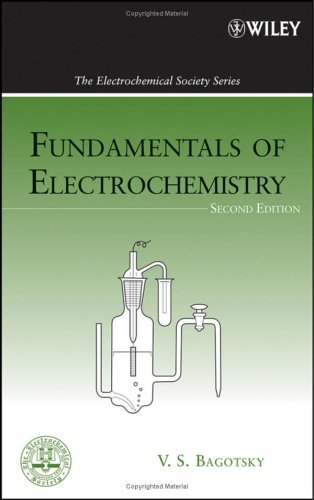

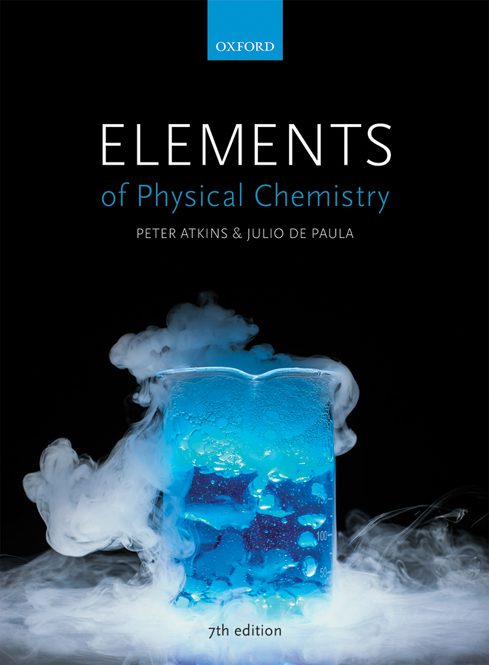
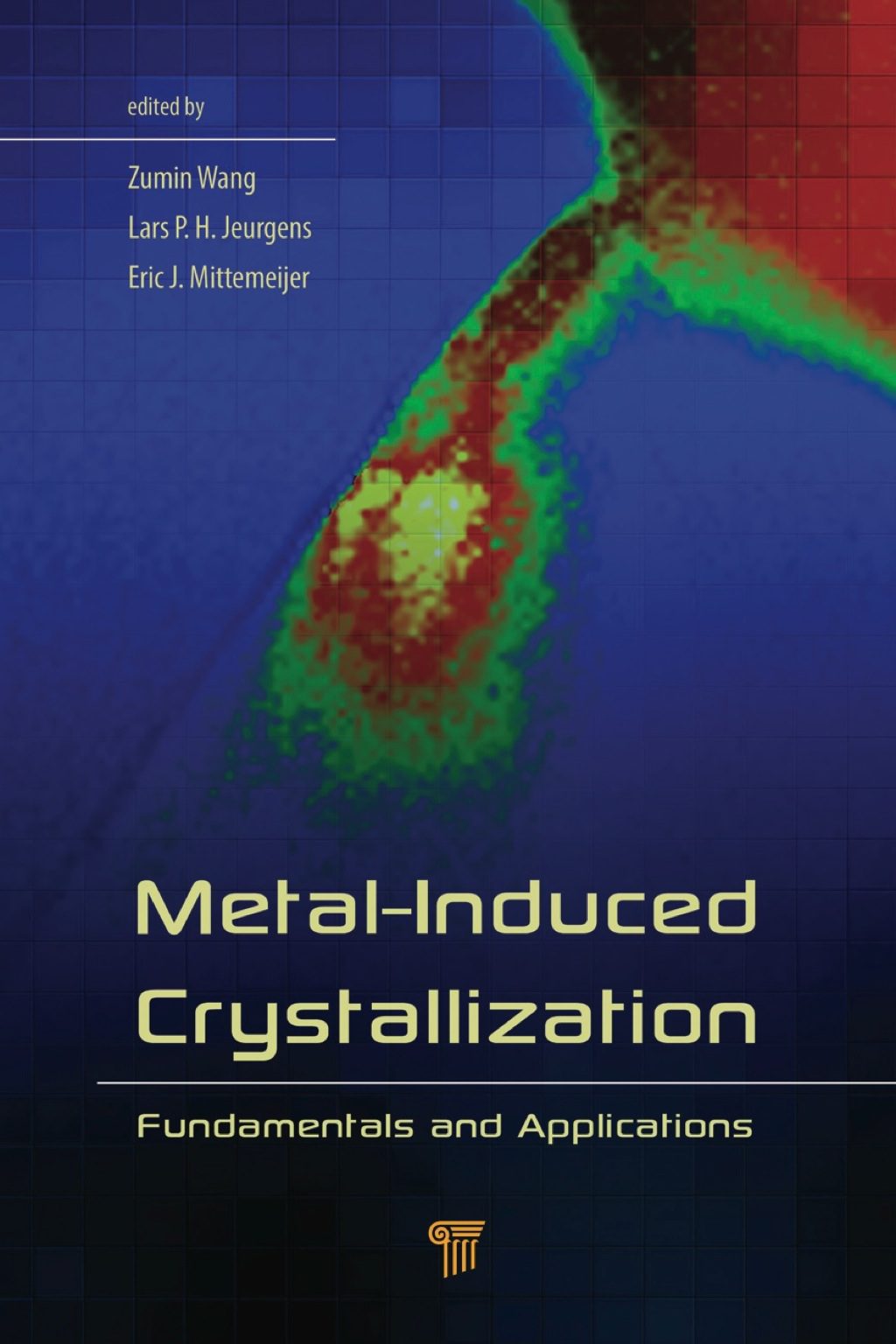
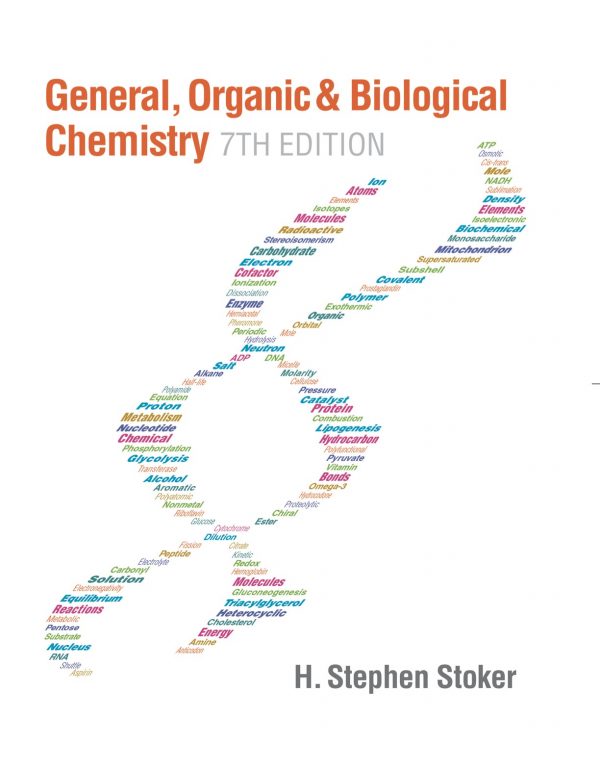
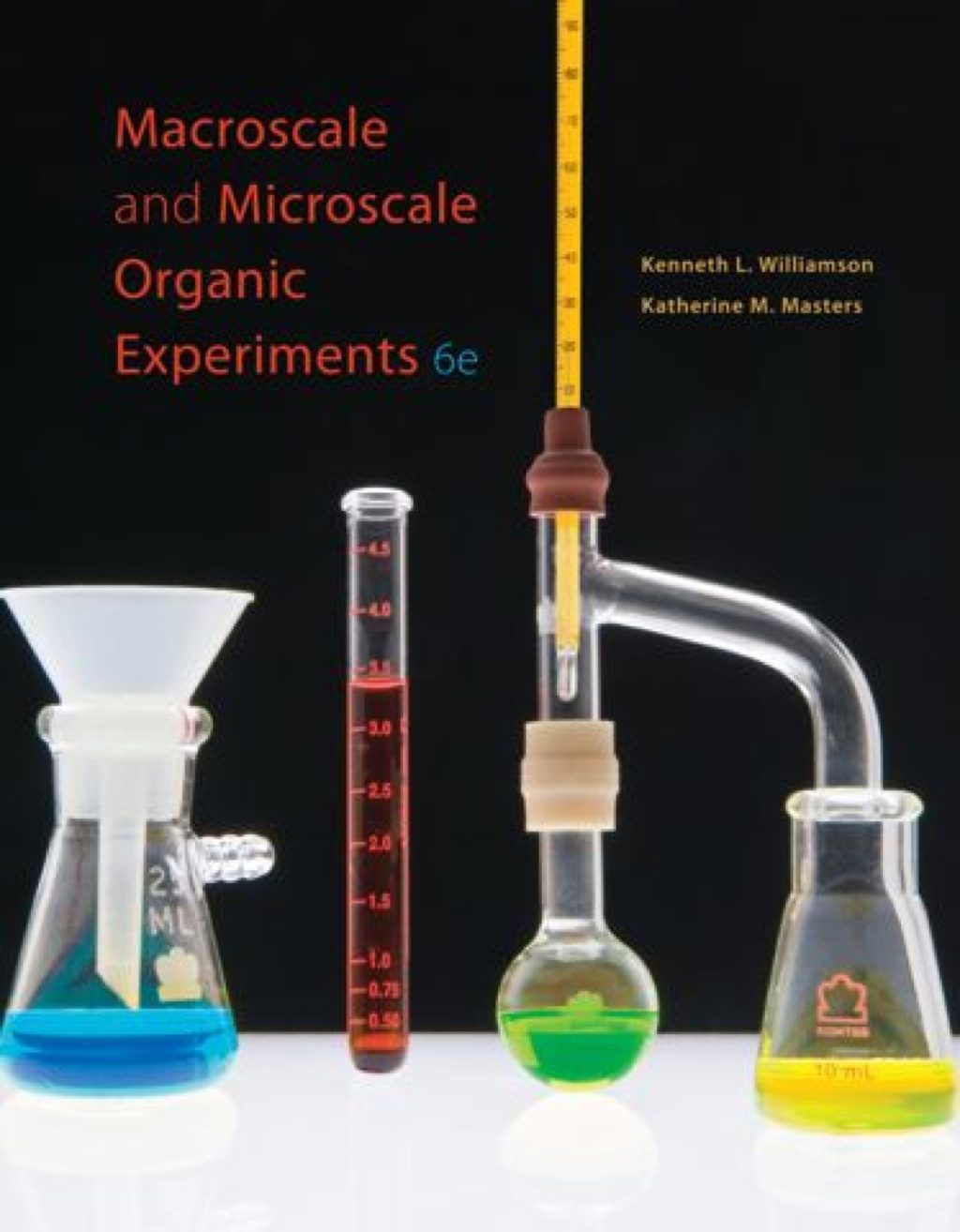
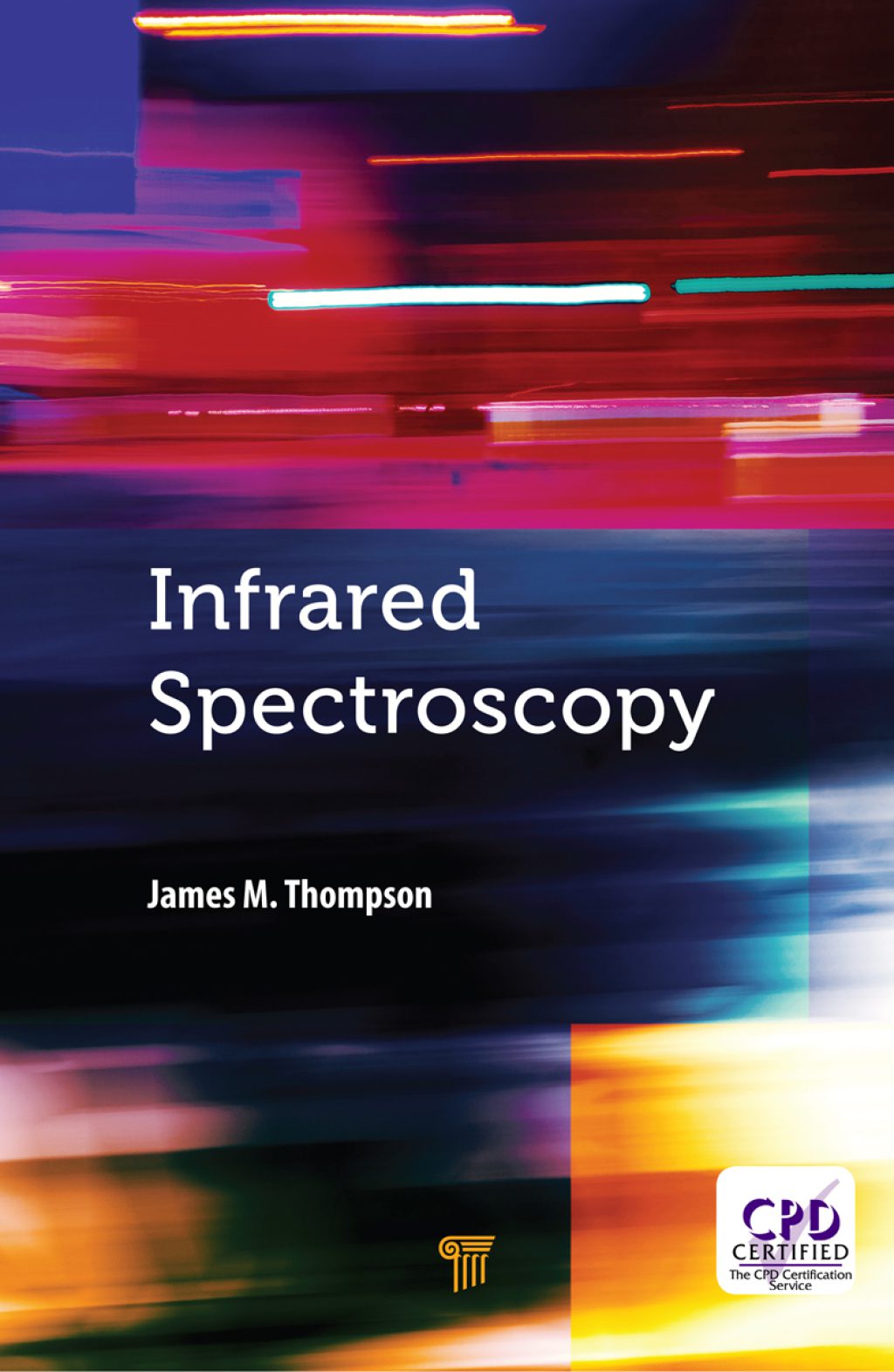
Reviews
There are no reviews yet.